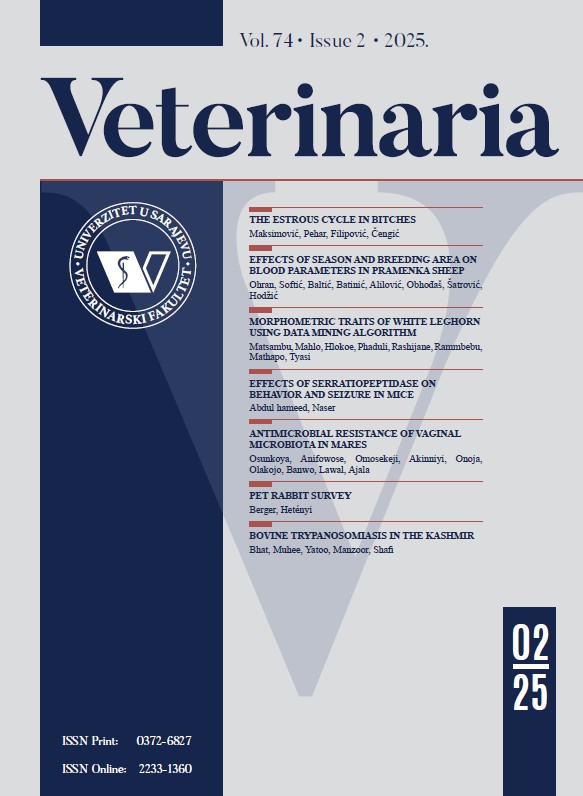Comparison of larvae morphology and DNA preservation in plastination using different fixatives
DOI:
https://doi.org/10.51607/22331360.2025.74.1.98Keywords:
Anatomy, DNA, larvae, morphometry, PCR, preservation, plastinationAbstract
This study was conducted to determine the extent to which the structures of parasite larvae treated with different fixatives were preserved through the silicone plastination procedure and to investigate the degree of DNA preservation in plastinated larvae.For morphometric evaluation, the length (anterior-posterior) and maximum width (widest trunk width) of the larvae were measured to record changes before and after the plastination process. The silicone plastination protocol was applied at room temperature using three different fixatives. Subsequently, the larvae were deplastinated. Total genomic DNA (gDNA) from third-instar plastinated and deplastinated larval samples was extracted using the GeneJET Genomic DNA Purification Kit. DNA concentrations were measured at 260 nm using a UV-Vis spectrophotometer. The PCR protocol was applied, and photographs were taken using a UV transilluminator.Following plastination, the larvae were completely dry, and the process rendered them harmless. They could be stored for an extended period, and most importantly, their morphological characteristics remained analyzable by graduate students. No visible morphological issues were observed during the dehydration and impregnation stages of plastination; however, after curing, some specimens exhibited significant collapses, leading to alterations in their normal anatomy. Additionally, DNA concentrations in the deplastinated groups were found to be higher than in the plastinated groups. In the second step of PCR, a ~300 bp band was obtained in all plastinated and deplastinated groups.In conclusion, the silicone plastination method enables the long-term preservation of larval morphological structures with minimal alterations while causing a partial reduction in DNA integrity.

Downloads
Published
How to Cite
Issue
Section
License
Copyright (c) 2025 Dilan birogul, Betül Baygeldi, Duygu Neval Sayin Ipek

This work is licensed under a Creative Commons Attribution 4.0 International License.







